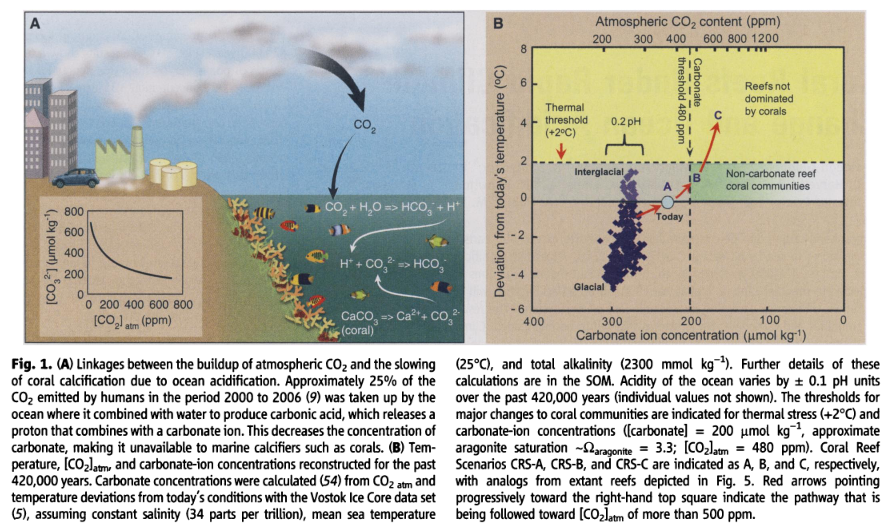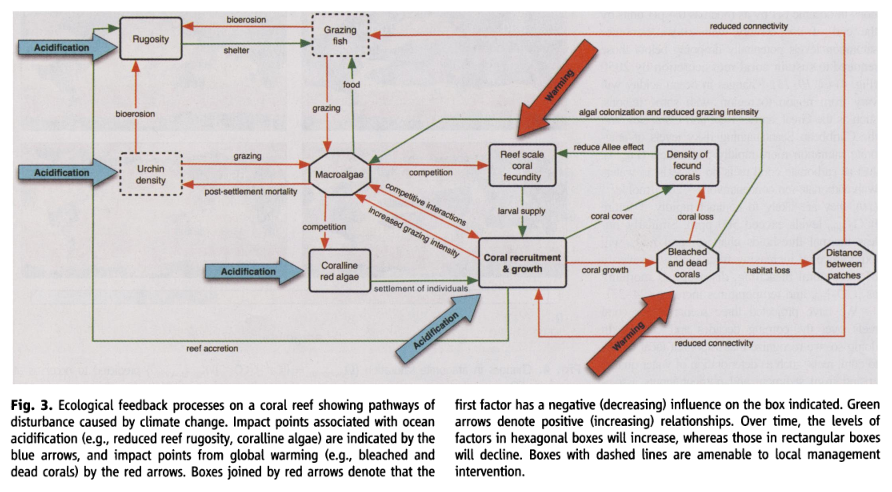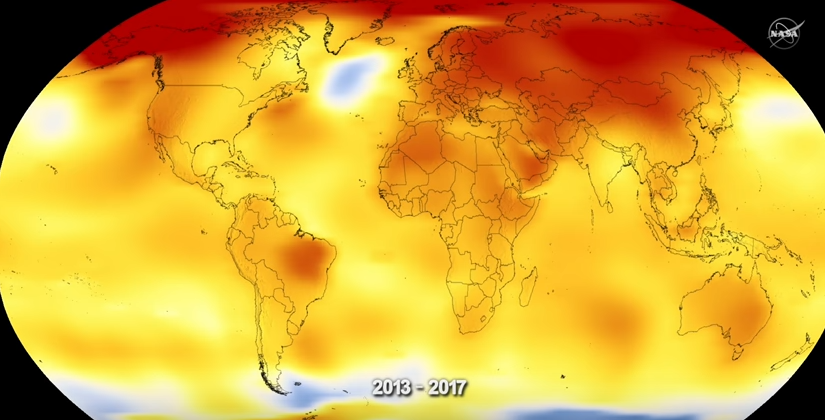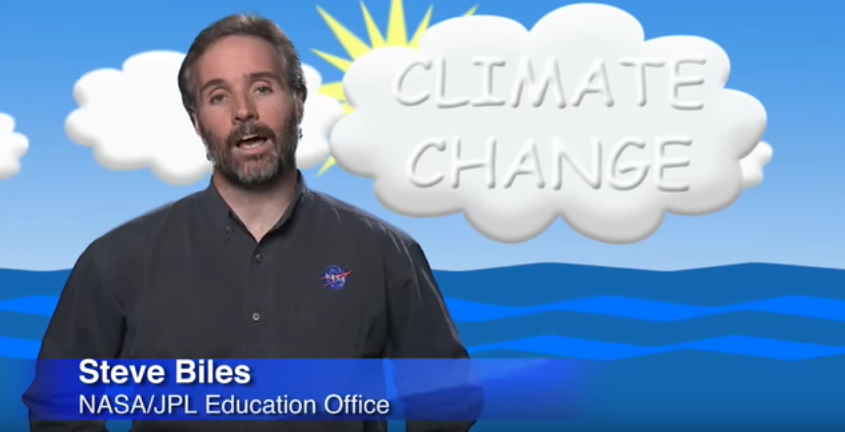The two terms while having similarity in meaning are used in slightly different semantic contexts. While the two casually connected terms “global warming” and “climate change” are used interchangeably, they describe entirely different physical phenomena.2
Global Warming
Global warming refers to the upward temperature trend across the entire Earth since the early 20th century, and most notably since the late 1970s, due to the increase in fossil fuel emissions since the Industrial Revolution. Since 1880, the average surface temperature has gone up by about 0.8 °C (1.4 °F), relative to the mid-20th-century baseline (of 1951-1980).3
Climate Change
Climate change refers to a broad range of global phenomena created predominantly by burning fossil fuels, which add heat-trapping gases to Earth’s atmosphere. These phenomena include the increased temperature trends described by global warming, but also encompass changes such as sea level rise, ice mass loss in Greenland, Antarctica, the Arctic and mountain glaciers worldwide. Shifts in flower/plant blooming are also apparent along with more extreme weather events.3
Click on the image below for 2017 surface temperatures.
Click the image below for a climate change demonstration.
Earth’s Climate History
The Earth’s climate has changed throughout history. Just in the last 650,000 years there have been seven cycles of glacial advance and retreat, with the abrupt end of the last ice age about 7,000 years ago marking the beginning of the modern climate era–and of human civilization. Most of these climate changes are attributed to very small variations in Earth’s orbit that change the amount of solar energy our planet receives. The current warming trend is of particular significance because most of it is very likely human induced and proceeding at a rate unprecedented in the past 1300 years.4
Climate Change Results
Climate change observations result in rising sea levels; incursion of salt water into fresh water rivers. Permanently melting glaciers, ice caps, and snowfields resulting in the loss of cyclically produced fresh water sources, and expanding arid areas are also being observed. As well, a number of positive feedback loops intensify the causes and effects of global warming: higher temperatures producing drier forests and thus more forest fires releasing more CO2 producing higher temperatures; higher temperatures melting more ice, exposing darker rock, water, or dirt, reflecting less solar energy and thus producing higher temperatures; and higher temperatures melting more permafrost, releasing more CO2 and CH4 from rotted organic matter and thus producing higher temperatures. CO2 remains in the atmosphere 70-120 years and more; CH4 remains in the atmosphere for 8-12 years, although it does more damage in the short run.4
“Earth is warming partly because of the emissions of greenhouse gases to the atmosphere.”5
“Human-induced emissions of greenhouse gases over the twentieth century have led to increases in temperature and changes in rainfall, wind, humidity, sea level, ocean acidity, snow cover, etc. have been assessed rigorously through the Intergovernmental Panel on Climate Change (IPCC) in a series of reports.”5
Causes of Global Warming Leading to Climate Change
Climate change is caused by an over-accumulation of greenhouse gases in the atmosphere (mainly CO2). CO2 is produced by the combustion of fossil fuels (mainly oil, coal and gas) Electricity, heat production and transport are the fundamental sources of CO2 emissions from fossil fuel combustion.6

Image 1
Consequences of Climate Change

Image 2
Black Carbon Emissions
Black carbon is the sooty black material emitted from gas and diesel engines, coal-fired power plants, and other sources that burn fossil fuel. It comprises a significant portion of particulate matter or PM, which is an air pollutant.7

Image 3
Climate Change on Arctic Sea Ice and Ocean Acidification
Arctic sea ice extent will decline through the 21st century in response to atmospheric greenhouse gas (GHG) loading. Through fostering large heat fluxes into the atmosphere, delayed autumn and winter ice growth will promote increases in surface air temperature (SAT) over the Arctic Ocean that are out-sized compared to the globe as a whole. Ice loss will also likely influence mid‐latitude patterns of atmospheric circulation and precipitation.8
From 1953–2006, Arctic sea ice extent at the end of the summer melt season in September has declined at a rate of −7.8%/decade. The concentration of carbon dioxide in the Earth’s atmosphere now exceeds 380 ppm, which is more than 80 ppm above the maximum values of the past 740,000 years. During the 20th century, increasing CO2 into the atmosphere has driven an increase in the global oceans’ average temperature by 0.74 +/- C and sea level by 17 cm, and has depleted seawater carbonate concentrations by -30 umol kg-1 seawater and acidity by 0.1 pH unit. Approximately 25% of the CO2 emitted from all anthropogenic sources currently enters the ocean, where it reacts with water to produce carbonic acid. “Carbonic acid dissociates to form bicarbonate ions and protons,which in turn react with carbonate ions to produce more bicarbonate ions, reducing the availability of carbonate to biological systems”. Decreasing carbonate-ion concentrations reduce the rate of calcification of marine organisms such as reef-building corals, ultimately favoring erosion.9

Image 4

Image 5

Image 6

Image 7
Climate Change and Species Loss
Animals and plants are vanishing from parts of their range that are now too hot. Leading to extinctions.
Rising temperatures are depressing some plant and animal populations, driving species toward the poles, shifting migrations and common behaviors. Populations of Adelie penguins on the Antarctic Peninsula have plummeted. An Arctic shorebird, called the red knot, is getting smaller. Ice loss is forcing walruses by the thousands onto land in Alaska. Entire regions are being transformed: Alpine ecosystems from the Rockies to the Swiss Alps are being squeezed off mountaintops. The exceptional ocean warmth of the past few years has triggered coral bleaching and die offs at reefs around the world.10
“The lack of predictability of climate change and therefore its impacts makes it very difficult to plan for the changes. We face tremendous uncertainties about what climate impacts will actually take place.”11
Renewable energy sources are ultimately needed for climate change and global warming mitigation. Science has proven that the world is in need of renewable energy to stop further damage to Earth and its vulnerable ecosystems.
With global warming being as controversial of a topic as it is, being that the impacts are most of the time absent until many years later, there have been distaster’s around the world that have lead to an immediate response for use of renewable energies for example:
In the U.S.
Four major energy disasters in the 1970’s led the country to focus on renewable energy:
- The oil crisis
- Gas prices increased greatly nation wide which lead to less reliance on gas.12
- Gas prices increased greatly nation wide which lead to less reliance on gas.12
- The natural gas crisis
- Overall shortage of natural gas.12
- Overall shortage of natural gas.12
- The electrical energy crisis
- Publicly regulated utility monopolies were nearing bankruptcy which the community feared and soon after, solar energy and wind energy became much more popular.12
- Publicly regulated utility monopolies were nearing bankruptcy which the community feared and soon after, solar energy and wind energy became much more popular.12
- Nuclear disaster
- Three-Mile Island
- Middletown, Pennsylvania March 28 1979, 3 Mile Island nuclear reactor melted down creating an explosion releasing highly radioactive gasses and iodine-131 into the neighboring community. This event solidified anti nuclear public awareness resulting in new regulations for the nuclear industry and has been seen as a contributor to the decline of new reactor construction programs. In the areas of greatest fallout, hypothyroidism and lung cancer rates jumped up to 400 percent while leukemia rates climbed 700 percent.13
In Russia
Pripyat, Ukraine in April of 1986 Chernobyl nuclear power plant had a meltdown of its nuclear fuel rods creating an explosion causing radioactive fallout across Europe. This caused European countries to push toward renewable energy as opposed to nuclear energy.14
In Turkey
Air pollution has become a significant concern in the country which has led to the use of renewable energies, specifically hydropower and biomass, for a cleaner, more sustainable future.15
In the Gulf of Mexico
Gulf of Mexico, April 20 2010, British Petroleum (BP) experiences an explosion on the Deepwater Horizon oil rig resulting in the largest marine oil spill in history. Public awareness to the dangers of exploratory drilling and BP’s failure during the cleanup operation brought renewable energies to the forefront.16
In Nigeria
Nigeria is currently experiencing a drought that has led to civil war. In response to the climate change, Nigeria has started seeking new methods to produce energy mainly through biomass fuels from agriculture while moving away from burning fossil fuels and trash, their main source of energy. Nigeria recognizes that renewable energy and infrastructure should be developed as well as socio-economic avenues explored with changing markets on renewable energy.17

